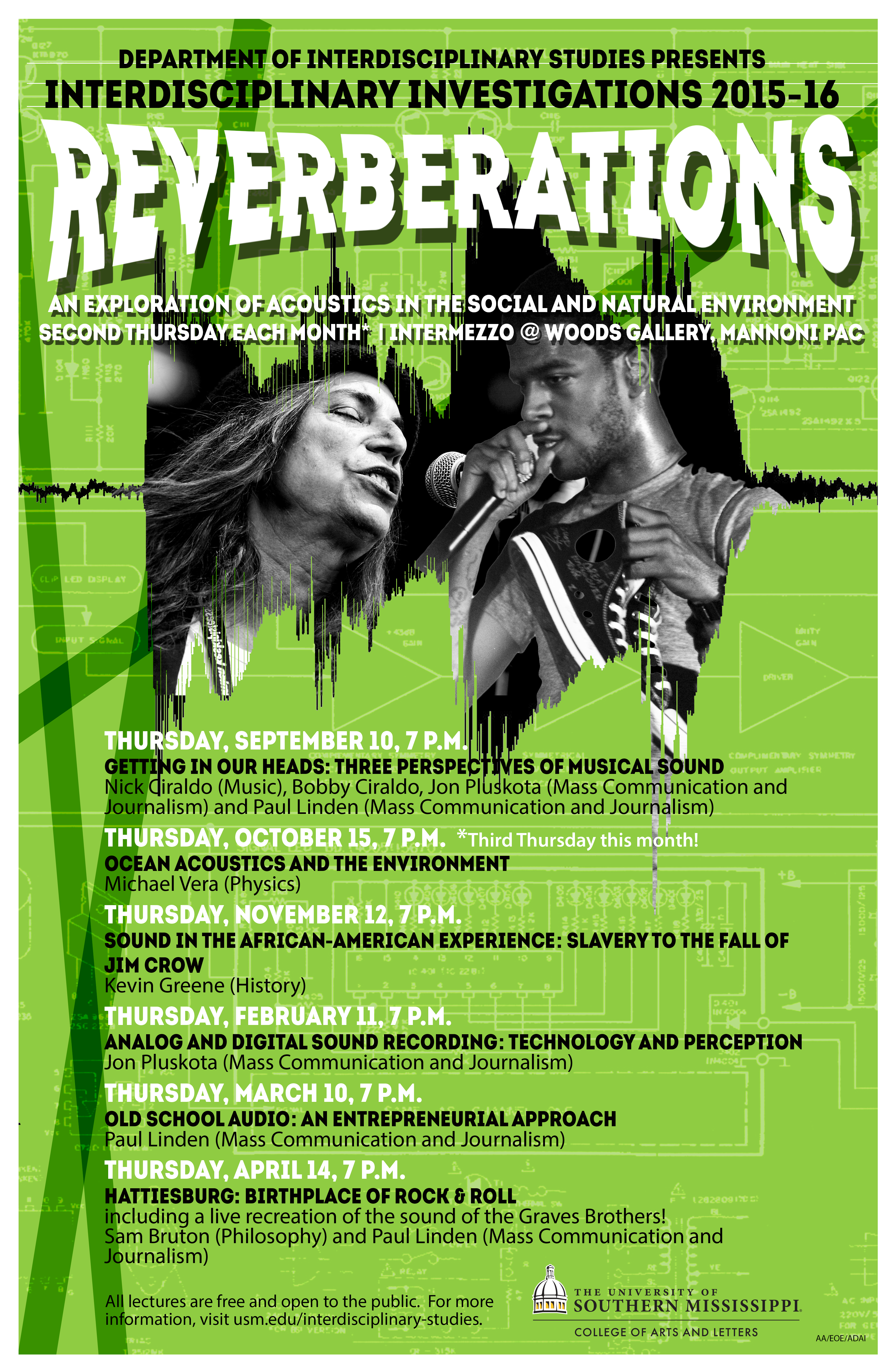Event Title
Location
Mannoni Performing Arts Center
Start Date
14-4-2016 7:00 PM
Description
While most residents of Hattiesburg have heard that Hattiesburg is the “birthplace of Rock & Roll,” few know much about the basis of this claim. It stems from recordings made by the Graves Brothers in the late ‘20s and ‘30s.
Roosevelt and Aaron/Uaroy Graves were gospel musicians who first recorded “rocking and reeling” spirituals for Paramount records in 1929. At the urging of Jackson-based talent scout H.C. Speir, they recorded several more songs as “The Mississippi Jook Band” in 1936.
(Blind) Roosevelt, who played guitar and sang, and Aaron, who played the tambourine and kazoo, were joined on the later session by a local piano player named Cooney Vaughn. The recording was made in a guest room at the Hattiesburg Hotel, formerly located at the intersection of Mobile and Pine Streets in downtown Hattiesburg.
Commenting on this session, noted blues historian Robert Palmer writes in The Rolling Stone Illustrated History of Rock & Roll that two of the songs “featured fully formed rock & roll guitar riffs and a stomping rock & roll beat.”
Hattiesburg: Birthplace of Rock & Roll
Mannoni Performing Arts Center
While most residents of Hattiesburg have heard that Hattiesburg is the “birthplace of Rock & Roll,” few know much about the basis of this claim. It stems from recordings made by the Graves Brothers in the late ‘20s and ‘30s.
Roosevelt and Aaron/Uaroy Graves were gospel musicians who first recorded “rocking and reeling” spirituals for Paramount records in 1929. At the urging of Jackson-based talent scout H.C. Speir, they recorded several more songs as “The Mississippi Jook Band” in 1936.
(Blind) Roosevelt, who played guitar and sang, and Aaron, who played the tambourine and kazoo, were joined on the later session by a local piano player named Cooney Vaughn. The recording was made in a guest room at the Hattiesburg Hotel, formerly located at the intersection of Mobile and Pine Streets in downtown Hattiesburg.
Commenting on this session, noted blues historian Robert Palmer writes in The Rolling Stone Illustrated History of Rock & Roll that two of the songs “featured fully formed rock & roll guitar riffs and a stomping rock & roll beat.”


